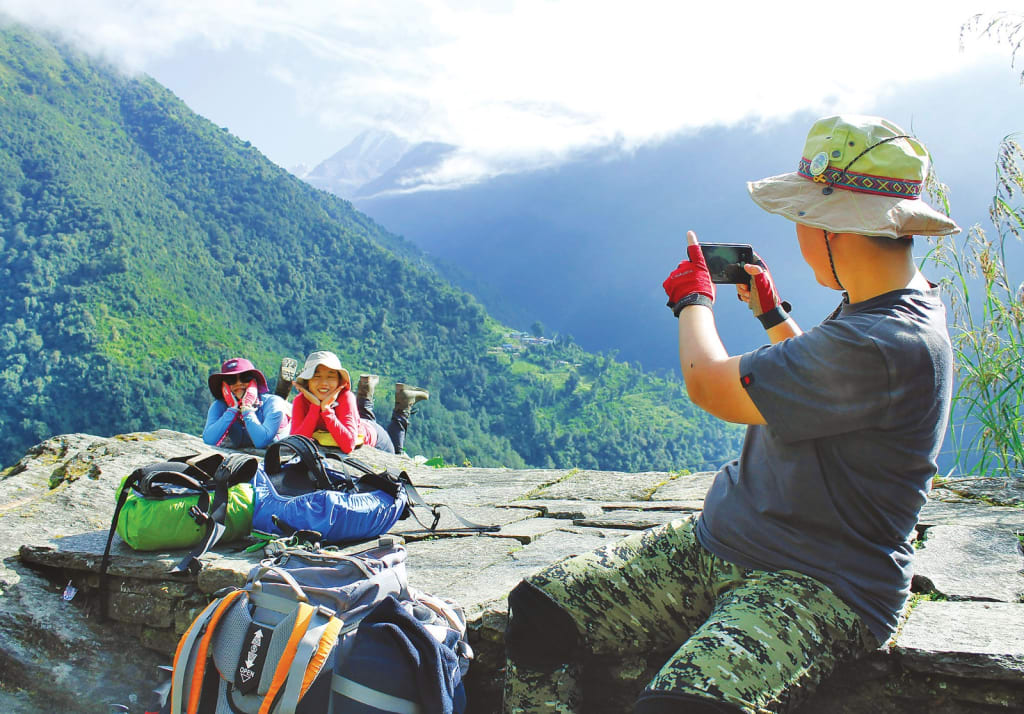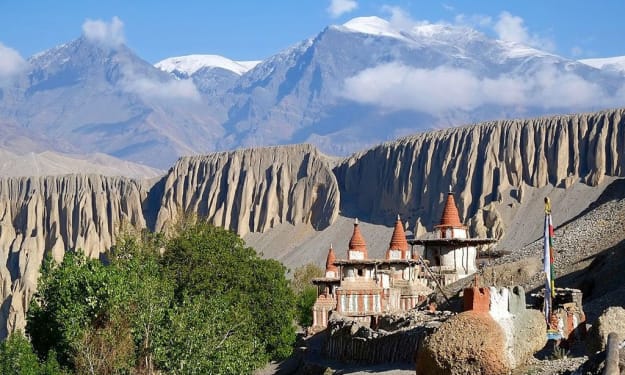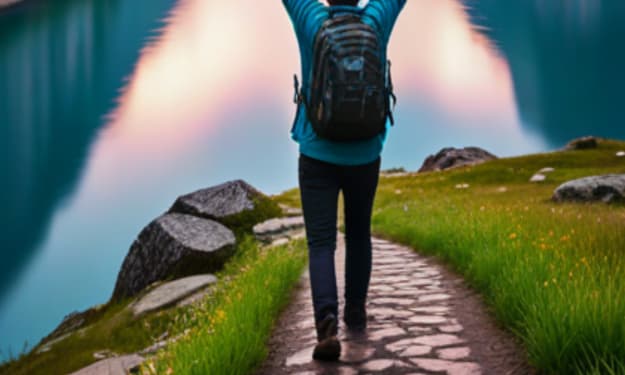7 places in Nepal you should visit in 2024
Visit Nepal 2024

Nepal Tourism Board, the country’s tourism promotional body, recommends seven top places to visit in Nepal this year, one each from the seven provinces. Here’s a brief introduction to them all.
Mundhum Trek
Mundhum Trek in Koshi province in the eastern part of Nepal is a new cultural walking trail. It passes through several indigenous ethnic villages and landscapes in Khotang and Bhojpur districts. This trail goes up to an elevation of 4,200 metres to the viewpoint of Silchung Peak and takes one through the settlements of the Kirati people. This route starts from Diktel Bazaar and passes through beautiful settlements like Chakhewa, Rawa Dhap, Salpa Bhanjyang, Silchung and Hanspokhari before ending in Bhojpur. There are some hotels in Diktel but trekkers are advised to carry tents. The trail offers panoramic views of most of the eight-thousanders, including Everest, Lhotse, Makalu, Cho Oyu and Kanchenjunga mountains. The spring season, March through May, is highly recommended for the trek.
Janaki Mandir
Janaki Mandir at Janakpur in Madhesh province was constructed in 1874 and is a blend of Mughal and local architecture. The temple is a three-storey building and has 60 rooms, making it the largest temple in Nepal. Pilgrims flock here by the thousands to pay homage to Janaki Mandir—Janaki being the other name of Sita, the daughter of King Janak. The temple houses an idol of Sita which was found near Ayodhya, the kingdom of Ram. The marriage anniversary of Lord Ram and Sita is celebrated in Janakpur every year on Vivaha Panchami, which falls in December. In the southwest corner of Janaki Mandir is the Vivaha Mandap, which has been built at the site where the marriage of Ram and Sita is said to have taken place. Another well-known temple in the vicinity is Ram Mandir, which is built in pagoda style and is hence different from the other temples in Janakpur that generally bear resemblance to Mughal architecture. It houses a female statue, said to be of Yogamaya, which has the reputation of being one of the most beautiful images of female forms in Nepal. Other holy sites of interest include the Laxman Temple, Sankat Mochan Temple and Hanuman Temple.
Kuri Village, Kalinchok
Kuri village, a popular tourist destination around 150 km from Kathmandu, lies at an altitude of 3,842 metres above sea level in Kalinchowk of Dolakha district, in Bagmati province. People visit the place to enjoy the snow during the winter besides the mesmerising landscapes and splendid panoramic view of the Himalayan range. Kalinchok gets snow mainly at the end of December and the snowfall continues till the end of February or mid-March. When there is snow, it is difficult for jeeps, buses and cars to reach the top of Kuri village. Chains are wrapped around the wheels of vehicles and specially modified jeeps with highly experienced drivers are used to carry visitors. There are several hotels and restaurants in the area. The road up to Kuri has also improved over the years.
Annapurna Base Camp
Annapurna Base Camp trek, in Gandaki province, makes for a picturesque journey that takes you to the foothills of the Annapurna South, up to 4,130 metres above sea level. The five-day trek (seven days for slow walkers) offers rich cultural diversities, typical Nepali villages and the flora and fauna nestled at the foothills of Annapurna. The distance from Pokhara to Annapurna Base Camp is approximately 81 kilometres. It is among the shortest and most budget-friendly treks in Nepal. For Nepalis, lodging costs around $5 to $10 per day. For foreigners, the overall cost of the trek ranges from $800 to $1500 on average per person. Annapurna Base Camp trek can be done at any time throughout the year as each season offers a different trekking experience. The ideal time for the trek depends on your weather preferences and what you expect from it. However, autumn (September to October) and spring (March to May) are considered the two best seasons for the trek, as the days at the time are warm and bright with clear skies.
Bardiya National Park
Bardiya National Park, located in the southern Tarai belt of Lumbini province, is home to one of the most elusive and majestic animals on earth—the Royal Bengal Tiger. The park, which covers an area of 968 square kilometres, is considered one of the most important protected areas in the country. It is a prime destination for those looking to catch a glimpse of a tiger. A bit of luck and patience will offer a good chance to see the Bengal Tiger. The jungle safari also offers one the opportunity to spot Asian elephants and the greater one-horned rhinoceros. The rare Gangetic river dolphins are occasionally spotted on rafting trips along the Geruwa River, the eastern channel of the Karnali river. Besides, visitors can enjoy the homestays and explore local Tharu culture. The right time to visit the park is from mid-September to mid-December and mid-February to May.
Khaptad National Park
Khaptad National Park in Sudurpaschim province is a protected area in the far western region. It stretches over four districts of Bajhang, Bajura, Achham and Doti and ranges in elevation from 1,400 to 3,300 metres. The park can be visited throughout the year. Trekkers are advised to bring their tents, food and other supplies. The Nepal Tourism Board says of late, social media has been increasingly influencing Nepali travellers to go to Khaptad. Since the far-flung Khaptad National Park is still offbeat for many travellers, the area remains pristine and fresh. The seasons of spring (March-May) and autumn (October-November) are the ideal times to visit the park. The temperature ranges from 10°c to 20°c offering pleasant trekking weather. The monsoon begins in June and lasts until September and during this time, roads often become muddy and slippery. From December to February, winter brings snow and chilling winds to the park.
Limi Valley
Limi Valley in Humla district of Karnali province serves as an ideal destination for those seeking stunning natural landscapes. The 11th-century Halji monastery is the highlight of the Limi Valley, which has a rich Tibetan culture. Limi Valley also features sculptures and mythological architecture. The trek up to Gyuo Kharka, 5,150 metres above sea level, is the Limi Valley Trek’s primary feature. The trek also provides stunning views of Saipal (7,031m), Byas Rishi, Api, Kanjirowa and Kanti mountains. The Himalayan peaks of Tibet, including the holy Mount Kailash and Gorlamdanda, can also be viewed from Limi Valley. A beautiful view to take in from the acme is Lake Mansarovar in Tibet, which is located at the base of Mount Kailash.
About the Creator
Enjoyed the story? Support the Creator.
Subscribe for free to receive all their stories in your feed. You could also pledge your support or give them a one-off tip, letting them know you appreciate their work.





Comments
There are no comments for this story
Be the first to respond and start the conversation.